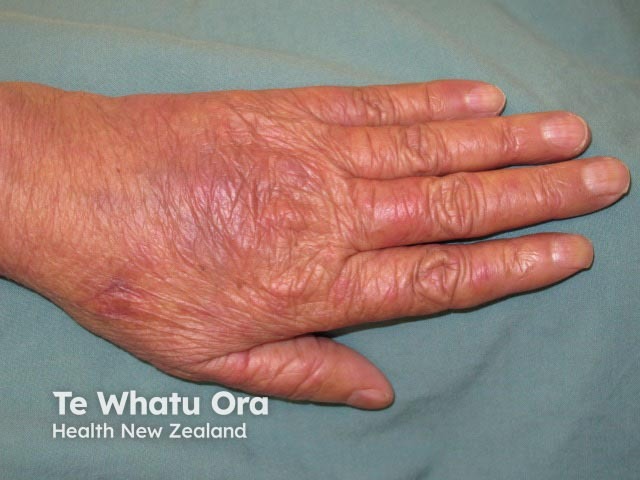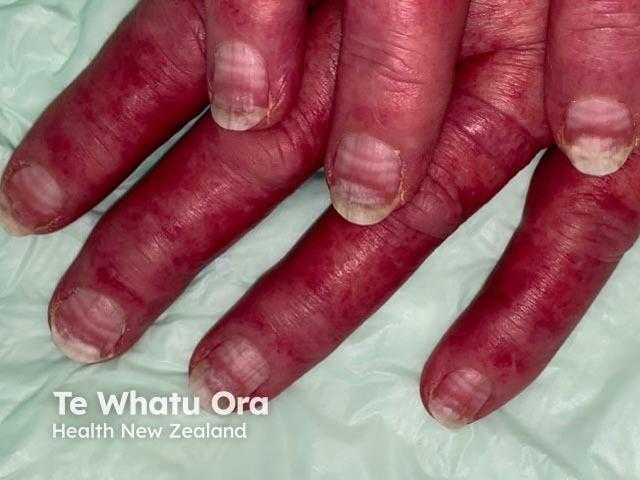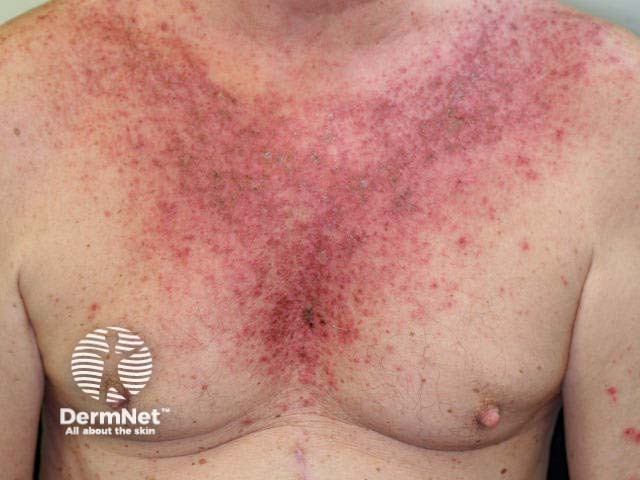Main menu
Common skin conditions

NEWS
Join DermNet PRO
Read more
Quick links
Authors: Dr Daniel Mazzoni, Resident Medical Officer, Royal Brisbane and Women’s Hospital, Brisbane, QLD, Australia; Dr Nicholas Lucarelli, Resident Medical Officer, Eastern Health, Melbourne, VIC, Australia. DermNet Editor in Chief: Adjunct A/Prof Amanda Oakley, Dermatologist, Hamilton, New Zealand. Copy edited by Gus Mitchell. May 2020.
Introduction
How they work
Clinical uses
Adverse effects
Cutaneous adverse effects
Taxanes are a class of chemotherapeutic agents used in the treatment of some cancers [1]. They were first derived from the bark of yew trees.
Two of the most common taxanes used in clinical practice are docetaxel and paclitaxel [2].
Taxanes are antineoplastic drugs that inhibit mitosis by interfering with microtubule formation during cell division. By targeting cells with a high turnover, they can slow the growth of solid organ tumours [2].
Taxanes are used in an adjuvant setting or as a primary treatment of cancer [2]. They are administered intravenously every week (paclitaxel) or every three weeks (docetaxel).
They are used for the primary treatment of [2]:
They can also be used in conjunction with other chemotherapy agents.
Like other cytotoxic agents, the side effects of taxanes largely affect organ systems with high mitotic turnover rates.
The most common adverse effects are [2,3]:
Other adverse effects include [2,3]:
Adverse cutaneous reactions occur in most patients on taxane therapy. They arise more frequently with docetaxel than with paclitaxel [2]. Taxanes affect hair, nails, mucosa, and skin. Most adverse effects are of mild to moderate severity and are usually dose-dependent (depending on the frequency of dosing, the dose intensity, and the cumulative dose). Symptoms usually resolve spontaneously after cessation of taxane therapy [2,4].

Dorsal hand-foot syndrome due to chemotherapy

Nail changes due to chemotherapy

Eczematous dermatitis on male undergoing chemotherapy treatment
Taxanes cause acute reversible alopecia, also known as chemotherapy-induced alopecia [2].
Nail disorders occur in 35–44% of patients receiving taxane therapy [2]. Onycholysis is characteristic. Other drug-induced nail abnormalities include [2,5]:
Nail disease due to taxanes is generally cumulative. It tends to resolve within a few weeks after discontinuing taxanes.
Skin cooling systems such as frozen gloves have been shown to reduce the adverse effects on the nails [4]. Avoidance of trauma to the hands and nails, and the use of hand moisturisers are recommended. The use of nail lacquer also seems to be helpful, suggesting photo-sensitivity may play a role in the development of some of the nail effects [6].
Mucositis due to taxanes is common, particularly stomatitis. Dysgeusia may also occur, typically within the first week of therapy [2].
Skin toxicities due to taxanes are broad with various manifestations as described below [2].
Hypersensitivity reaction
Maculopapular or morbilliform rash
Dorsal hand-foot syndrome
Drug-induced subacute cutaneous lupus erythematosus
Pustular rashes
Scleroderma
Recall inflammatory reactions
Serpentine supravenous hyperpigmentation
Other adverse reactions to taxanes include: